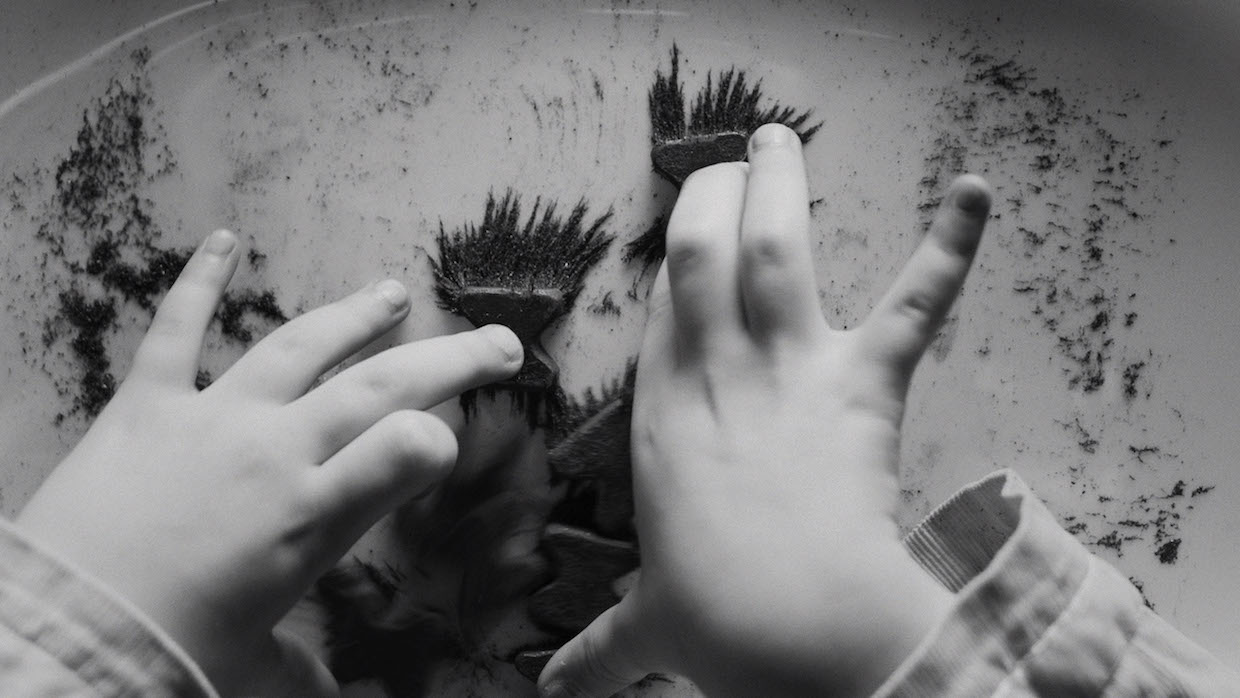 Back to selection
Back to selection
“In Hybrid Documentaries, the Classic Rules of the Game Do Not Always Work”: DP Andrii Kotliar on Iron Butterflies
 Iron Butterflies,courtesy of Sundance Institute.
Iron Butterflies,courtesy of Sundance Institute. In Iron Butterflies, the hybrid doc from director Roman Liubyi, the political ramifications of Malaysia Airlines Flight 17—which was shot down by Russian forces as it was passing over eastern Ukraine—are unraveled and contextualized within broader global events. DP Andrii Kotliar talks about his experience shooting the film, including one particularly scorching day on the job.
See all responses to our annual Sundance cinematographer interviews here.
Filmmaker: How and why did you wind up being the cinematographer of your film? What were the factors and attributes that led to your being hired for this job?
Kotliar: It’s not quite a classic story, because I’m also a producer on this project, so it’s hard to say where it started.
[Director] Roman [Liubyi] invited me to work on the development of the idea, and in the end what was planned in one format was transformed several times. We were looking for the right form for this movie, and [we] seemed to have found it, including a visual solution. For me, as a cinematographer, it is a great pleasure to work in a team of like-minded, open-minded people.
Filmmaker: What were your artistic goals on this film, and how did you realize them? How did you want your cinematography to enhance the film’s storytelling and treatment of its characters?
Kotliar: In hybrid documentaries, the classic rules of the game do not always work, you must constantly be open to changes and searches. As always, I tried to visually support the director’s ideas as much as possible—in this case, to combine non-classical camera movements, and to look for interesting combinations of lenses within one scene. An important component of the visual style of this film was the great work done in location scouting. Sometimes, in order to find one field, we went to 10 or 15 or 20 locations and worked until we found exactly the one we needed. This search was very organic, it added a lot to my perception of working on this film.
Filmmaker: Were there any specific influences on your cinematography, whether they be other films, or visual art, or photography, or something else?
Kotliar: I think that specifically in this film I relied on my own experience and the experience of my colleagues in the documentary field. It also helped a lot that the director of the film made a large lookbook of the project at the very beginning—there were references related to choreography, physical theater, some painting, textures, costumes, color and contrast suggestions. All of this became a signpost along which we followed when creating the cinematic language of this film.
Filmmaker: What were the biggest challenges posed by production to those goals?
Kotliar: I would not single out any specific task; thanks to my colleagues on the set I felt as comfortable as possible.
Maybe it was a problem that one of the first days with a big dramatic recreation was a stage with more than 150 extras in the field and it was terribly hot. We used black smoke and a lot of big HMI lights, mirrors for reflections, people got tired quickly and we needed to work precisely at the high position of the sun in maximum heat to have the right contrast. At that moment, I felt very sorry for the people and felt responsible for their discomfort.
Filmmaker: What camera did you shoot on? Why did you choose the camera that you did? What lenses did you use?
Kotliar: It is clear that hybrid documentary cinema opens up space to think about the right tools.
You do not have to match everything and try to be “classic” with a look. For the documentary part we used a Sony FX9 as a main camera and a Sony a7S II sometimes when we needed a 2nd camera for the director.
For the fiction part we used an ARRI ALEXA Classic. And for lenses, oh it was a lot of different lenses: Cooke Uncoated, Cooke Classic Zoom 25-250, Cooke s5I, ARRI Alura Zoom, Zeiss Lightweight Zoom 18-80, Canon 400mm, and some Sony G series lenses for alpha.
Filmmaker: Describe your approach to lighting.
Kotliar: There was no general visual approach to light in this film; I tried to set up the tasks for each individual scene. In my work, I try to remember those states of light that I saw in real life, in a documentary environment. In the same time for a couple of scenes we created something completely artificial to emphasize the surreality of certain circumstances.
Filmmaker: What was the most difficult scene to realize and why? And how did you do it?
Kotliar: I think the scene with a long queue in the field, due to difficult weather conditions, a large number of extras, difficult choreography and camera movement, and the fact that it was one of the first shooting days and all departments were still getting to know each other.
Filmmaker: Finally, describe the finishing of the film. How much of your look was “baked in” versus realized in the DI?
Kotliar: I had to do color correction remotely—everyone knows that this is not the best way for cinematographers, but surprisingly, we very quickly found a common language with the colorist from Munich, and in a few rounds we did all the work with color. I am very happy with the result, because the right balance was found between interference and non-interference to the color.
TECH BOX
Film Title: Iron Butterflies
Camera: Arri Alexa Classic, FX9
Lenses: Cooke Classic Zoom, Uncoated Cooke, Canon 400-600mm ,Zeiss Lightweight Zoom
Lighting: Arri Fresnel HMI and Tungsten, Skypanels, Astera, Dedolight
Color Grading: Da Vinci
